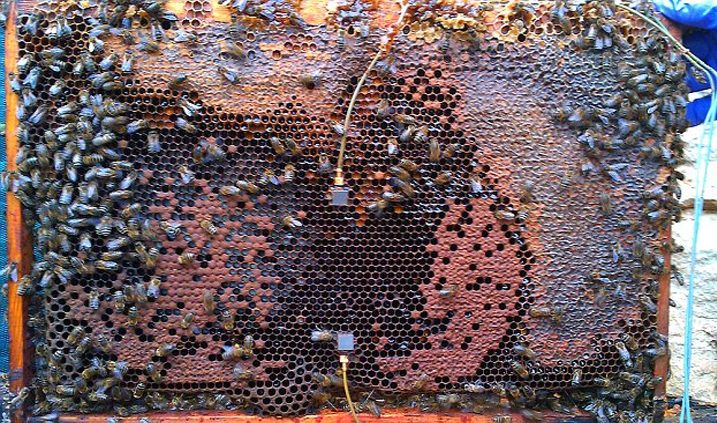Let’s hear the bees’ warning sound.
About bees, their raw honey, royal jelly, pollen, wax and propolis there is still much to know. New researches have just discovered a kind of sound or scream when they jump on each other. A better understanding of how bees behave will bring benefits to both us and the bees.
Keep learning about bees and read our next article: Bees Could Revolutionize Photography
Vibrational Pulse of Honey Bees
A group of researchers from the University of Nottingham Trent in the UK have recently discovered that bees produce a kind of sound or scream when they jump on top of each other. This sound is produced by the muscles of their wings by creating a vibrational pulse over them.
Researchers previously thought that this “exaltation” sound was made by bees as an interruption signal, in order to warn other bees to leave the flower peccary in a particular direction. However, now they have discovered that this sound is generated in a wide variety of circumstances and many of them different. They often make this sound when surprised by some surprise or unexpected event.
Previously, bees were suspected of making this noise as a signal to ask for food, as further research documented that bees quickly exchanged their food after the noise was realised.
Subsequently, other investigations came to the conclusion that the noise made by the bees was intended to stop the dance that bees perform to communicate to their sisters the direction and location of a specific food source.
Another hypothesis that was being considered is that they made this noise to inform their companions not to pecorate or to go looking for food somewhere, where a predator or other disturbing nuisance could be found.
However, new research has found that this scream or noise made by bees happened very frequently, mainly at night. They also documented that this noise could be provoked in most hives after a slight shaking of the hive.
The researchers of this new research, said that this noise happened in a lot of circumstances and many of them different. In addition, it could be generated in response to a surprise stimulus, such as the light shaking of the hive.
Cameras in the bees’ hives
These investigators also used cameras in the hive. After recording them, they found that noise often happened when a bee jumped over another bee.
These findings have been published in the scientific journal PLOS One, suggesting that bees produce these sounds or screams when they are startled. Therefore, this opens a window for us to monitor the stress state of a colony of bees and canocer how agitated they are.
These investigations were carried out over a period of 9 months. In this period two hives were studied: one in the United Kingdom for four months, and another in France from April 2015 to December 2015.
The sound of honey bees cannot be heard by us
The sound that bees make cannot be heard by humans, so researchers used accelerometers (an instrument used to measure vibrations) placed in the middle of the honeycomb.
They embedded the accelerometer in the comb, using a small amount of molten wax, in order to fix it as best as possible to the comb.
With these results, it is demonstrated that the previous studies on this noise made by the bees were erroneous.
When a bee tries to stop another bee in its pecoreo work, the first one tips a head to the other one that is carrying out its dance. This could cause a startle reaction on the latter, which would produce this noise or scream.
The movement of the bee’s hairs directs the sister bees towards the pollen source thanks to electrical signals from the flowers.
In another study by the University of Bristol in the UK, also published last year, researchers discovered that bees have small hairs that can vibrate, which feel and interpret signals transmitted by flowers, directing them to plants to collect their pollen.
Using a laser to measure vibrations, they found both the antennae of the bees and the hairs on their bodies vibrating in response to an electric field.
Video of the bees
Looking at the nervous system of the bees, they discovered that it is the hairs of their body that alert the nervous system for this flower signal.
Source:
El periódico del Reino Unido “Daily Mail”. 14 de febreo del 2017. http://www.dailymail.co.uk/sciencetech/article-4224136/Honey-bees-let-whoop-noise-startled.html







Leave a Reply
Want to join the discussion?Feel free to contribute!